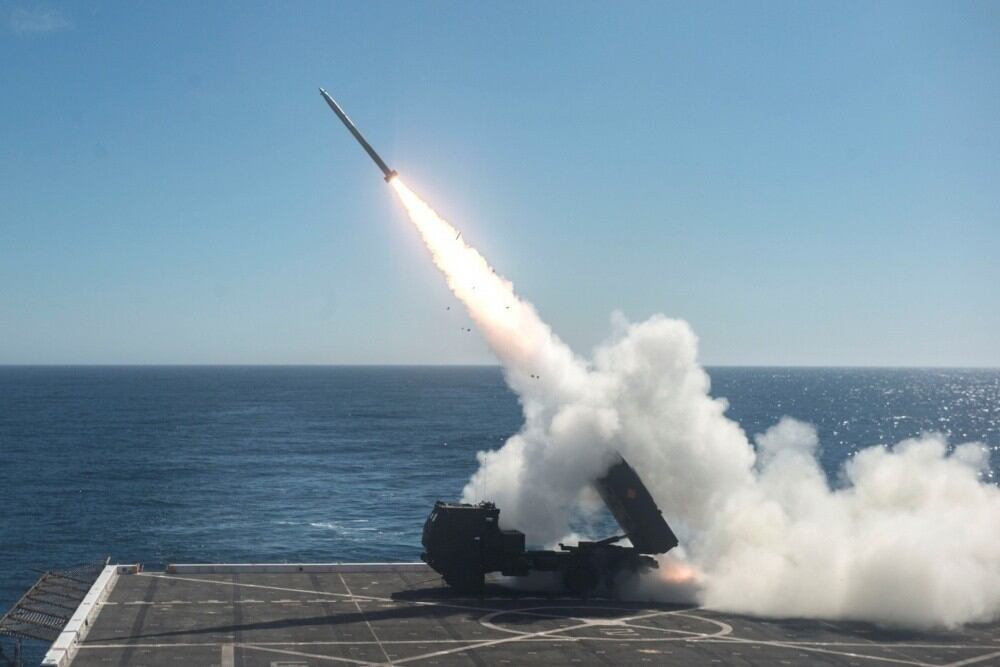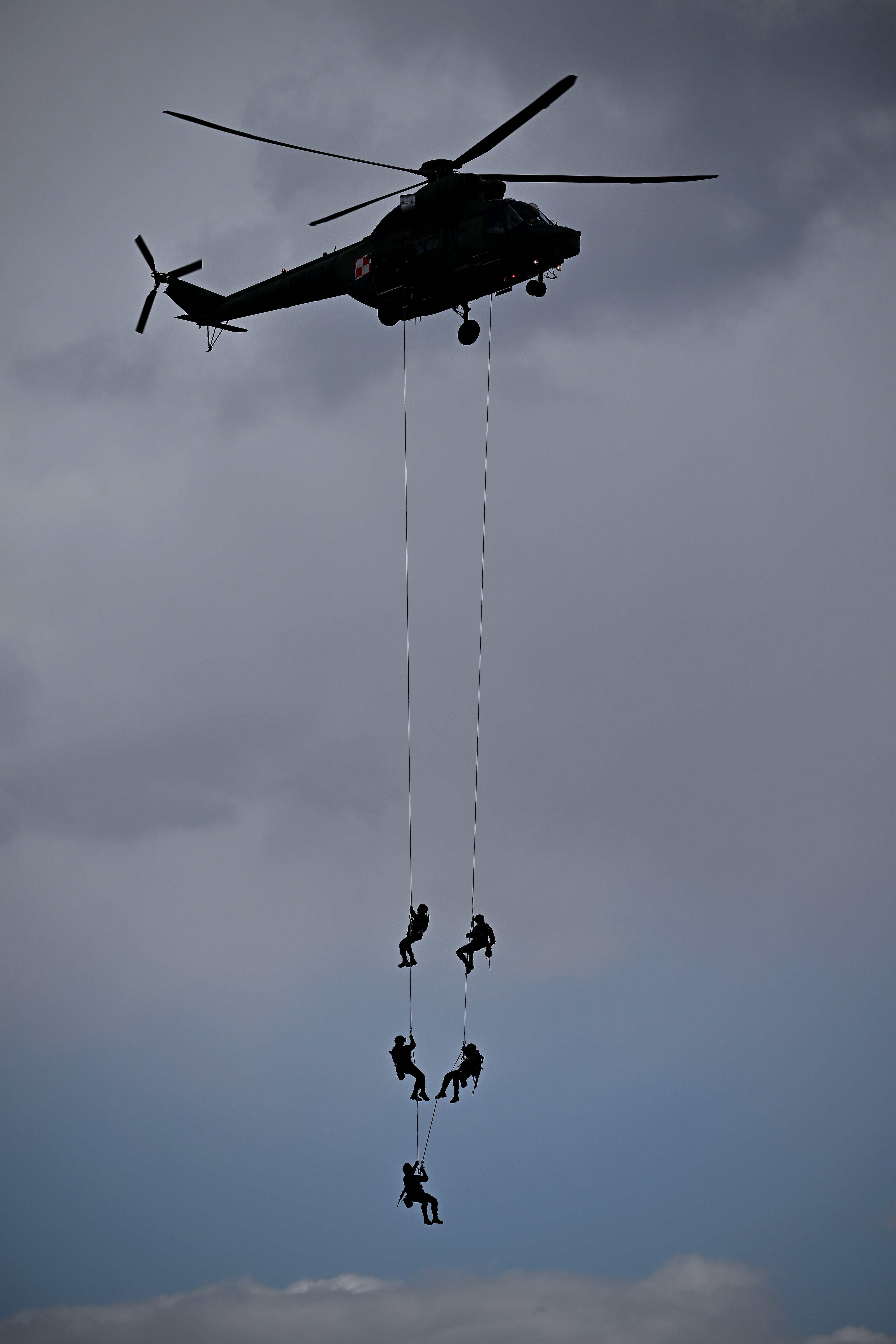WASHINGTON — The U.S. Army, recognizing it will operate not just on land but also across air, sea, space and cyberspace, is releasing its first new doctrine in 40 years.
The 280-page doctrine for multidomain operations, titled “Field Manual 3-0,″ will make its debut at the Association of the U.S. Army’s annual conference, which runs Oct. 10-12.
Army leaders said it will be a key guide for the force, but stressed the service will continue to evolve the doctrine as it moves forward with its biggest weapon system modernization push since the 1980s. The service hopes to have a fully modernized force by 2030.
“There is not a time in recent history that is so potentially dangerous,” Army Chief of Staff Gen. James McConville writes in the manual’s foreword. “Russia, our acute threat, is conducting an unprovoked war on the sovereign country of Ukraine. Our pacing challenge, China, with an economy nearly equal in size to ours, is building a world-class military to challenge us and threatening its neighbors, including Taiwan.”
Meanwhile, McConville adds, “we cannot take our eyes off our persistent threats: North Korea, Iran, and violent extremists.”
The new manual “demonstrates the first principles of speed, range, and convergence of the cutting-edge technologies needed to achieve future decision dominance and overmatch against our adversaries,” he writes.
McConville notes how potential opponents could increasingly challenge the Army. He writes that while Army forces have used space and cyberspace capabilities for more than two decades, they have never employed them in combat against capable opponents. Likewise, “Air and Maritime capabilities have long enabled successful operations on land, but it has been decades since air-ground integration and close cooperation between land and naval forces have been effectively challenged by a threat.”

The Army last issued a new doctrine, dubbed AirLand Battle, in 1982. This manual focused on close coordination between land and air forces, and it stemmed from lessons learned from the 1973 Arab-Israeli War. It provided a basis for how the U.S. Army could fight and win against the Soviet Union.
The Army’s new manual reflects nearly five years spent by the service first developing multidomain operations as a warfighting concept and later as a doctrine.
The service released several versions of the multidomain operations concept beginning in 2018 and has refined it through evaluations, exercises, war games and its first multidomain task force. The task forces, established to test the concept, will now serve as operational units around the globe. There will be five tailored to operate in specific theaters, from Indo-Pacific Command to European Command.
Three key phases
The doctrine lays out three phases of multidomain operations: competition, crisis and armed conflict. It addresses the challenge of peer competitors using layered capabilities at standoff range to deter, requiring the U.S. as well as its partners and allies to use redundant, land-based capabilities to destroy or degrade threat-networked intelligence, surveillance and reconnaissance capabilities as well as long-range fires, the field manual explains.
China and Russia are positioned to “win without fighting” when it can control the narrative and facts on the ground, so the Army must establish a truthful narrative to contest that approach during both competition and crisis phases of operation, it adds.
The eight-chapter document, emphasizes the Army must assume it is always visible to the enemy. And for the first time the Army included a chapter on its operations in largely maritime environments, Richard Creed, director of the service’s Combined Arms Doctrine Directorate, told Defense News in a recent interview.
“When you think about the importance of INDOPACOM and the dynamics based on the geography of a theater like that, you understand [that] land forces, the Army in particular, have huge contributions to make in any campaign in that type of environment,” he said.
‘We’re at an inflection point’
The Army doesn’t yet have much of the modernized equipment meant to enable multidomain operations, but McConville told Defense News in a recent interview it still makes sense to move forward with the doctrine.
“We’re at an inflection point,” McConville said.
Indeed, the Army initially expected to release the doctrine over the summer.
While the extra time provided the service an opportunity to observe and learn from Russia’s invasion of Ukraine, the major ideas in the doctrine did not change, according to Creed.

“What we did do, however, in light of our continuous observations of what’s been going on in the Russia-Ukraine war, is to make sure that we’re looking at those events through a lens that didn’t appeal to our preconceived notions,” he explained.
Creed said it was important to move quickly with the new document because “doctrine drives culture ... and it certainly drives the readiness culture in terms of what you’re training against, what kinds of military problems you’re trying to solve. And cultural shifts take a long time.”
The next step, Creed said, is to help soldiers internalize the doctrine.
“We’re going to have to train our people to execute it,” he said. “We’re going to have to develop leaders who understand it, and we have to play around with it during the execution of training and operations to foster what people like to call ‘a campaign of learning.’ ”
In the late 1990s, the Army updated its 1982 doctrine to adjust to what it termed “full-spectrum operations.” Similarly, Creed said, he expects the multidomain operations doctrine to require an update in the 2030 time frame.
“We will have an army that looks very different than the army now in terms of the equipment and the organizations that it fields and is trained to execute multidomain operations,” he said. “Between then and now, we’re going to do the best we can with the force that we have.
“The force that we have is capable of executing what we’re putting into doctrine just fine.”
The new doctrine also triggers an update to 368 other doctrinal publications, he added, which will take place over the next several years.
Jen Judson is an award-winning journalist covering land warfare for Defense News. She has also worked for Politico and Inside Defense. She holds a Master of Science degree in journalism from Boston University and a Bachelor of Arts degree from Kenyon College.





